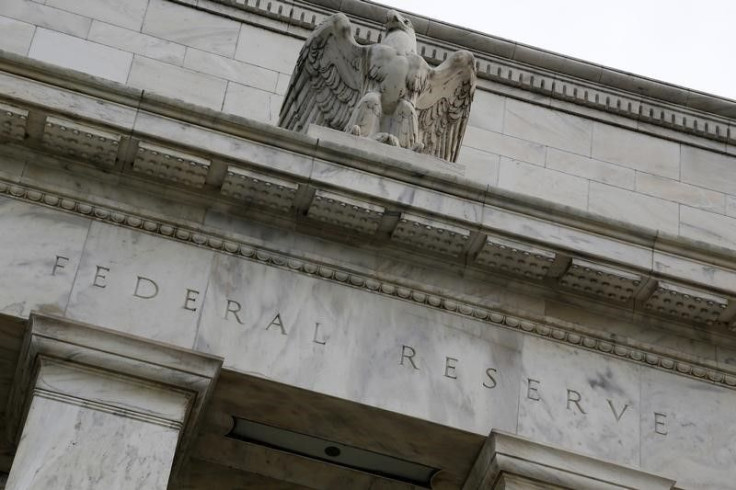Federal Reserve System: Is The US Economy Really Ready For The End Of QE?

Now that the Federal Reserve has closed the chapter on quantitative easing, what comes next for the U.S. economy? The narrative, according to the Fed, is that its five-year asset-purchasing program helped the U.S. avoid further economic catastrophe in the aftermath of the 2008 financial crisis. But as the third phase of the Fed’s effort, or “QE3,” comes to an end, many economists fear the U.S. economy hasn’t yet returned to full strength and may not be able to withstand a coming global slowdown.
Some economy-watchers point to recent weak retail sales and manufacturing data that may indicate the U.S. is hitting a soft patch. Others worry that a slowdown in global growth could begin to infect the economy.
“A lot of us like to say the U.S. economy is the cleanest dirty shirt in the hamper,” says Stephen Guilfoyle, chief economist at Sarge986.com. Guilfoyle acknowledges there are plenty of signs of recovery, “but I don’t think we’re anywhere near [where] we would like to be,” he says.
Last week’s weaker-than-expected GDP figures out of China did little to help. China, the world's second-largest economy, grew 7.3 percent year-on-year in the third quarter, slower than 7.5 percent in the second quarter. Economists foresee continued slowdown in China in the coming quarters and do not expect the region to meet its growth target of 7.5 percent in 2014. The World Bank recently urged China to cut its economic growth target to 7 percent in 2015 in order to focus on reform rather than meeting specific targets.
Some smaller economies are also a worry, says Srinivas Thiruvadanthai, director of research at the Jerome Levy Forecasting center.
“The U.S. economy on its own looks OK,” Thiruvadanthai says, “but the red flags are going to come from problems abroad. Most importantly, the problems in the emerging markets.”
Certainly, the U.S. economy has a history of flourishing while withstanding slowdowns across the globe. In 1997, for instance, the U.S. boomed and avoided financial contagion while much of Asia endured an economic meltdown.
But is the U.S. economy strong enough to remain immune today?
“If China were to cave in, it would certainly impact the United States,” said Peter Cardillo, chief market economist at Rockwell Global Capital. In the ‘90s, Cardillo notes, “China was not the powerhouse of Asia. It was an emerging market that was just beginning to take off. Now it’s the second-largest economy of the world, and if the second-largest economy in the world is feeling ill, that sickness becomes contagious.”
The U.S. is in a different place today, too. In the late ‘90s, the economy benefited from a combination of ideal conditions: peaking productivity from baby boomers, a debt cycle that had not yet peaked, and a “once in a generation” technology boom, observes Edward Dempsey, chief investment officer at Pension Partners, LLC.
Aside from quantitative easing, the Federal Reserve has other tools at its disposal, which it could use if necessary. The central bank controls three levers of monetary policy: Open market operations, or the purchase and sale of securities in the open market; the discount rate, which is the interest rate charged to commercial banks and other depository institutions on loans they receive from regional Federal Reserve Banks; and manipulation of reserve requirements, the amount of money a depository institution must hold in reserve against certain deposit liabilities.
The central bank will apply all of these mechanisms moving forward. It could also return to quantitative easing. However, says Guilfoyle, “I think it would be seen as a failure if they went back to it too quick.”
Economists are now watching the Fed’s $4.5 trillion balance sheet, one of the bank's "passive" tools. The central bank could avoid selling the bonds it purchased as part of QE on the secondary markets to reduce supply to keep interest rates low. Meaning, the Fed can impact the supply side of the market for treasuries and mortgaged-backed securities by not selling.
The central bank has been winding down its bond-buying program since January and decided at its previous meeting in September to end the asset-purchasing program this month if the economy continued to improve. However, Federal Open Market Committee kept short-term rates near zero, which many investors expect to be raised in the middle of 2015.
Minutes from the Federal Reserve's latest Oct. 28-29 meeting are scheduled to be released on Nov. 19.
© Copyright IBTimes 2024. All rights reserved.





















